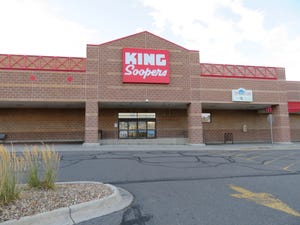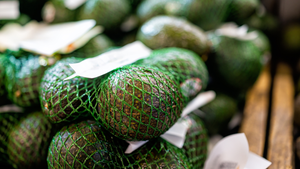GETTING A TASTE OF PREPARED FOODGETTING A TASTE OF PREPARED FOOD
EDISON, N.J. -- It is possible to get into the prepared food business without having an expensive kitchen, a commissary or a chef. The trick is to use other people's kitchens.Dan Giacoletto, director of merchandising for Orval Kent Food Co., Wheeling, Ill., demonstrated how at the recent taste show and exhibition of the Eastern Dairy-Deli-Bakery Association held here.Giacoletto showed nine dishes
November 7, 1994
AMY I. STICKEL
EDISON, N.J. -- It is possible to get into the prepared food business without having an expensive kitchen, a commissary or a chef. The trick is to use other people's kitchens.
Dan Giacoletto, director of merchandising for Orval Kent Food Co., Wheeling, Ill., demonstrated how at the recent taste show and exhibition of the Eastern Dairy-Deli-Bakery Association held here.
Giacoletto showed nine dishes he created in half an hour made almost entirely from ingredients available at the show. They included Caesar chicken salad, grape poppy seed chicken salad, lemon pepper rotisserie chicken, barbecued chicken pizza and lasagna with mushroom sauce, all made by using "other people's kitchens."
Giacoletto said he got idea from the movie "Other People's Money," starring Danny DeVito.
"If you remember the movie, Danny DeVito gloated and got that happy face on and was all excited when he could use 'other people's money' to do what he wanted to do," Giacoletto said. "Well, you can use other people's kitchens to do what you want to do," he told retailers and suppliers at the seminar.
The Caesar salad was made with a prepared salad mix and leftover rotisserie chicken. "Caesar salad is an item people don't make at home," he said. He turned ordinary chicken salad into a new dish by adding seedless grapes and poppy seeds. He said Mandarin oranges, pineapple and apricots can be used instead of grapes. He made the lasagna with mushroom sauce by adding a jar of sauce to a prepared lasagna. He said it isn't as good as from scratch. "But you know what? I don't have the time except for Sundays to sit down and spend four hours making my great lasagna, starting the sauce from scratch."
To prepare the dishes, which he displayed at the seminar, he used no chef, "no special tools, no special things, one little bitty cutting board, one paring knife, one serrated-edge knife and one apron." The key to a successful prepared foods program is to make each operation a place of destination, he said. "Find a couple of items that are mainstream, that people will say, 'You absolutely do it the best,' " he said.
Creating signature items is one way of becoming a destination place, he said. "The day your operation becomes a destination place is the day the register is going to go 'ka-ching, ka-ching, ka-ching,' and there's going to be a lot of profit," he said. He said customers must be able to get their food home in good condition, or they won't come back. That requires good packaging that won't allow food to leak all over car seats and good clothes, and quality food that won't dry out on the way home.
Giacoletto said there are many reasons to get into the prepared food category; for one, 54% of all meals are now eaten in restaurants or are takeout. "Eating out used to be an occasion," he said. "Now, it's a way of life."
Still, the prepared food business is not right for every operation, and it's not right for every unit of every operation. "Don't do it because everyone else is doing it," he said. "Do it because it is right for you."
After deciding to go into the prepared food business, Giacoletto said, supermarkets need to do research on what types of prepared foods to sell. He recommended pizza, Italian, Oriental, Mexican, hotfoods, cold foods, American diner-style and "Mom's cooking"- meat loaf, mashed potatoes and gravy, lentil bean soup and traditional salads.
He described these categories as "real food with flair." Giacoletto said keeping preparations simple will help create consistent products every day. He said McDonald's hamburgers look exactly the same in every franchise across the country because the preparation is simple. Adding romance to prepared foods will help attract business, Giacoletto said. He said people want to be able to enjoy the restaurant experience in their own homes. "People want romance in their food," he said. Giacoletto suggested setting a mood. When selling Italian foods, use Italian crockery, an Italian wine carafe or bottles of olive oil. "Make it romantic in your presentation, and you'll get the sale," he said.
At the same time, retailers should not aim for a gourmet atmosphere, he said. "It's real food with flair," he said. "Gourmets only account for a handful, probably less than a half percent of the buying public. For most people, mashed potatoes and gravy have become gourmet."
About the Author
You May Also Like




